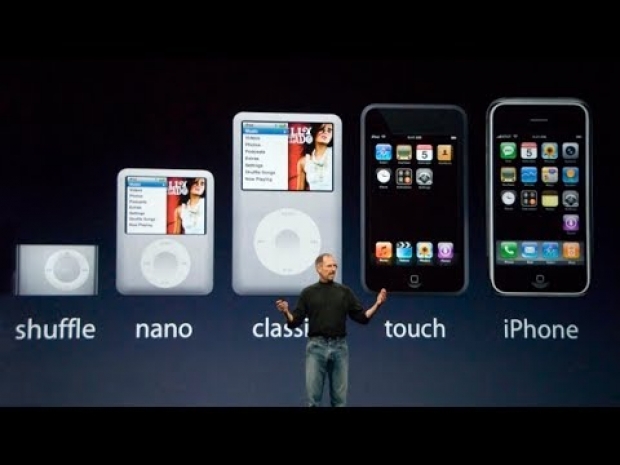Apple removed nano and shuffle stand-alone digital music players from its lineup. It has been nearly 12 years since the fruity cargo-cult's messiah Steve Jobs bought the world the iPod. It was essentually an expensive MP3 player. The technology had been there for ages and products were on the market already which were better. However that did not take into account Jobs' ability to convince people that a turd was chocolate.
Taking an MP3 player and giving it a nice design and market it bejesus out proved to be the life saver of Apple and removed its dependence on its Macs. However when Steve Jobs announced the touch screen iPhone, the writing was on the wall for the iPod. After all an Apple fanboy could use her or his iPhone to do everything that an iPod could do and call your mother to tell her you would be late home for dinner because you were stalking Gwyneth Paltrow.
Streaming music services, also made devices designed just for carrying digital tunes around less useful. Although oddly that is exactly what Jobs thought that Apple fanboys would want to do when the Shuffle devices about the size of matchbooks and featuring click-wheels for control but no screens debuted in early 2005. Jobs said that they let people carry broad libraries of music right in their pockets – how the fanboys cheered.
The small gadgets became popular with runners and others involved in physically active endeavors due to the ease with which they could be toted.
The iPod nano also hit the market in 2005, featuring click wheels and screens that improved the ability to select songs. Nano devices evolved with subsequent models, leading to one with a multi-touch screen and the look of an iPhone.
Another thing that Apple did not realise was how the internet would be important. Neither the shuffle nor the nano linked to the internet, instead relying on downloading music from Apple online shop iTunes through computers.
Three years ago Apple discontinued the last version of the original iPod Classic, introduced in October of 2001.




